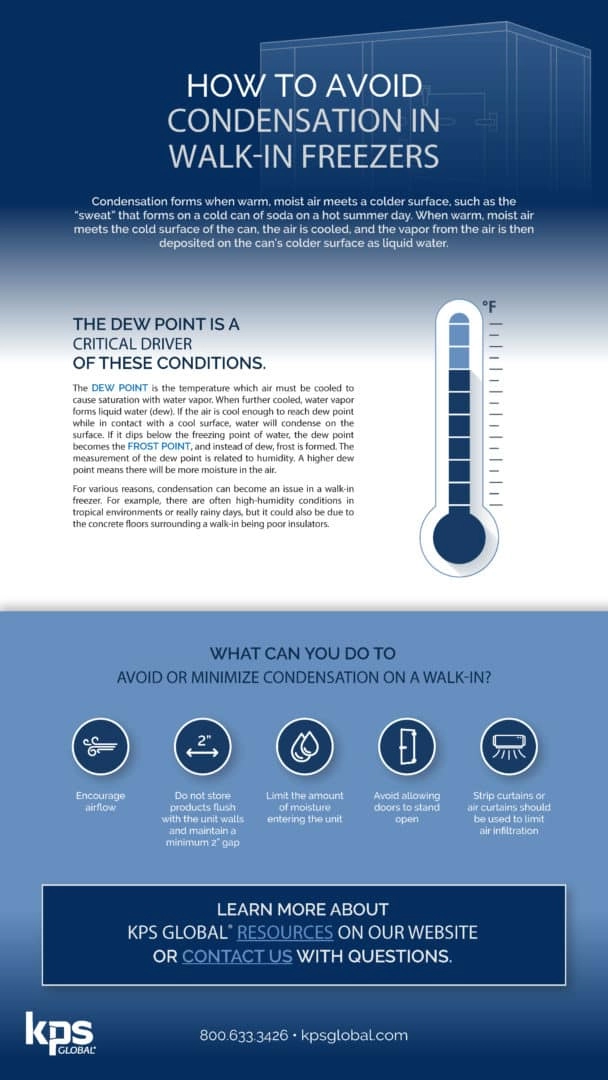How to Avoid Condensation in Walk-In Freezers
Check out the infographic below to see how you can avoid condensation in walk-in freezers. Condensation forms when warm, moist air meets a colder surface, such as the “sweat” that forms on a cold can of soda on hot summer day. When warm, moist air meets the cold surface of the can, the air is cooled, and the vapor from the air is then deposited on the can’s colder surface as liquid water. The dew point is a critical driver of these conditions.
The DEW POINT is the temperature which air must be cooled to cause saturation with water vapor. When further cooled, water vapor forms liquid water (dew). If the air is cool enough to reach dew point while in contact with a cool surface, water will condense on the surface. If it dips below the freezing point of water, the dew point becomes the FROST POINT, and instead of dew, frost is formed.
The measurement of the dew point is related to humidity. A higher dew point means there will be more moisture in the air. For various reasons, condensation can become an issue in a walk-in freezer. For example, there are often high-humidity conditions in tropical environments or really rainy days, but it could also be due to the concrete floors surrounding a walk-in being poor insulators.
Learn more about resources available on our website at kpsglobal.com/resources or contact us for questions.










